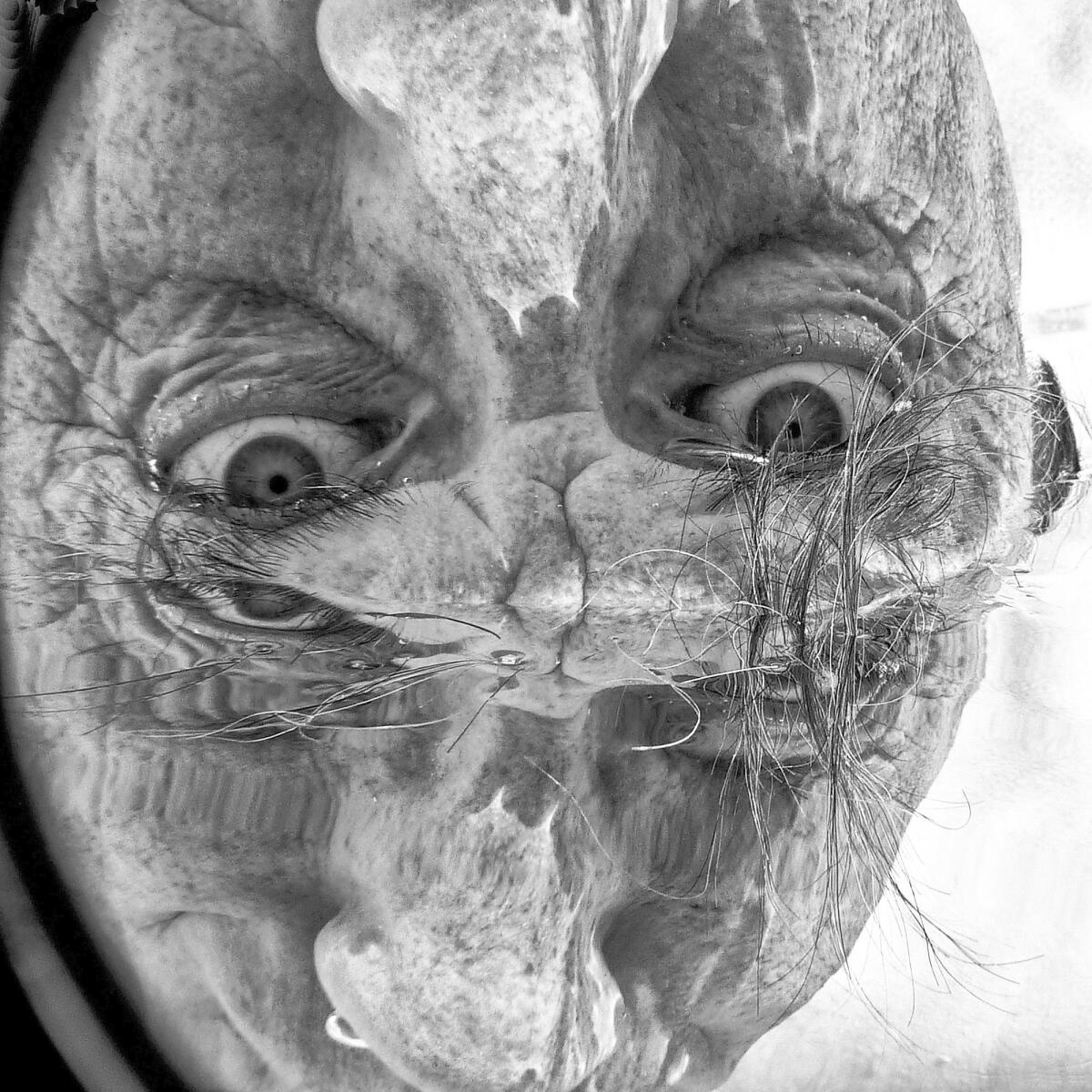Hansen: Capturing more than meets the eye

Gerhard Clausing talks with his hands, free flowing like a conductor, matching his wide-ranging ideas, which move seamlessly from provocative photography to German psychology to the definition of authenticity.
As a retired USC professor with a PhD in literature and linguistics, the Laguna Beach resident has been spending the last several years reinventing himself as an accomplished photographer. He has exhibited in many galleries and exhibits across the country, including the Photo Independent show in Hollywood.
His latest work challenges modern assumptions about aging, the body and the concept of beauty. He photographs close-up parts of his own body and uses mirrors to exaggerate the effect, hoping to elicit a deeply rooted response.

“I’m challenging people’s perception of themselves, and by showing them something that is more outrageous than what they are, you’re actually bringing them back to looking at themselves as quite acceptable and nice,” Clausing said.
This optimistic notion of pushing people to reach inward, contemplate themselves and then reach out for new insight is an important foundation in Clausing’s photography.
It matches his appreciation for Gestalt psychology, which says we must recognize primary patterns to understand the whole. The challenge is in turning something unfamiliar into something familiar.
“In some of the traditions that we have, beauty was always defined as perfect symmetry. But here I’m presenting symmetry that, while perfect, shows bodies that don’t exist,” he said. “In other words, parts of my cheek are duplicated, and it looks like an old fertility figure.”
Clausing admits that his latest series can be difficult for viewers, because the images can appear intimate and suggestive.
“People have repressed moments in their past. They repress things about how they conduct their life or what their attitudes are toward the body and other things,” he said. “Part of the function of art is to open up a little bit of that if you can and have them confront that. And to see some beauty in what otherwise might be dreary or might be even ugly. So there’s an attraction-repulsion kind of thing to some of the art that’s on the forefront.”
A student of history, Clausing said the response is perhaps not unlike that faced by William Mortensen, a Laguna Beach photographer and teacher who moved to the town in 1931 and died in 1965. Photographer Ansel Adams called Mortensen “the anti-Christ” for his sensational, modified photos of naked women.
Now, however, Mortensen is considered a pioneer in “pictorialism,” which produces romantic photos that look like paintings.
“He was way ahead of his time,” Clausing said. “He manipulated photos with sandpaper and pumice stone and razor blades and all kinds of things. He’s the forerunner of Photoshop and Lightroom and all these things. There’s this old idea that pictures show reality and are totally truthful and show an exact replica of reality at that time that the shutter was pressed. But that’s not true.”
Besides, people generally don’t want the truth — or at least nothing too painful. Paraphrasing French artist Marcel Duchamp, Clausing said that if “the viewer completes the photograph,” then it’s better if the image is not overt.
“The picture has to be less than fully straightforward. It has to be a little ambiguous,” he said. “The ambiguity is what makes the viewer question it and go inside himself or herself to see what it means. Then you’ve created a communication between the photographer and the viewer, and that to me is real art.”
As an example, Clausing points to his “Fleeting Moments” series (gerhardclausing.com), which uses time-lapse photography to blur images. With this sense of motion, there is an immediacy that draws people into the photo.
“I’m trying to capture little stretches of life rather than frozen moments,” he noted. “We used to be forced to throw away pictures like that because they weren’t sharp. That was the old teaching long ago. But now we take advantage of all that to make it into an artistic creation.”
Clausing said he likes to sit “like a tourist” on Laguna’s Main Beach boardwalk and use a small tripod. He will often take hundreds and sometimes thousands of photos, hoping the capture the right surreal images that can resemble ghosts.
He said most people have become jaded looking at regular photographs, especially with the advent of social media and smart phones. No one knows what’s real. Cute photography has become a commodity, so instead he’s hoping to highlight something deeper and not as visible.
“Every artist — and that includes writers and sculptures and painters and photographers — have to reinvent him or herself all the time. And that means, when you’re at your best, you’re looking at everything as if you’re a newborn for that first time. And that gives you a fresh perspective.”
It’s a life that not everyone sees. It takes patience.
And often, it’s not what is visible in front of you but what lurks beneath, exposing the fears that perhaps you don’t want to acknowledge.
Clausing points to a long-exposure photo he took of a family wading in the shoreline. The water swirls around them, almost like a tempest. The horizon is somewhat ominous and dark. The dad is pointing to something, as if barking orders to his children, but he seems ineffectual.
“Yes, the father is giving instructions and the kids are saying, ‘What the hell? We’re going to do what we want to.’
“For all we know, the shark might not be far away.”
DAVID HANSEN is a writer and Laguna Beach resident. He can be reached at hansen.dave@gmail.com.